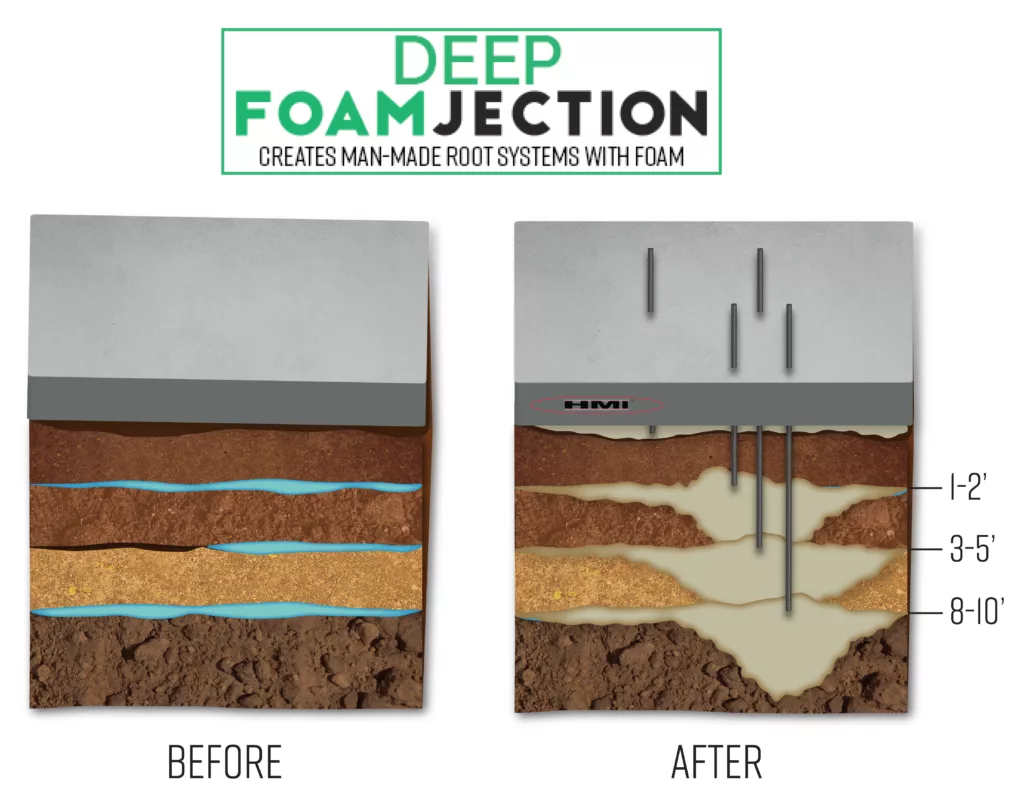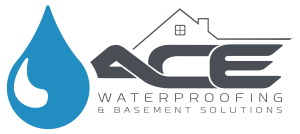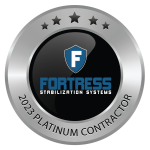
Polyfoam deep injection, also known as deep foam injection or polyurethane foam injection, is a soil stabilization technique that involves injecting expanding polyurethane foam deep into the ground to improve soil compaction, fill voids, and stabilize the soil. The polyurethane foam used in this process is a two-component material that reacts and expands upon mixing, creating a strong and lightweight foam ideal for soil stabilization applications.
The process of polyfoam deep injection typically involves the following steps:
- Access Points: Small access holes are drilled into the soil at strategic locations to reach the desired depth for injection.
- Foam Injection: The two components of the polyurethane foam are mixed and injected into the soil through the access holes using specialized injection equipment.
- Expansion and Stabilization: Upon injection, the polyurethane foam expands to fill voids and compact loose soil. As the foam cures, it creates a strong and stable matrix within the soil.
- Monitoring: The injection process is closely monitored to ensure even distribution of the foam and proper compaction of the soil.
Advantages of using polyfoam deep injection over other soil stabilization methods include:
- Quick and Non-Intrusive: Polyfoam deep injection is a relatively fast process that requires minimal excavation or disruption to the site. It allows construction projects to proceed rapidly and with less impact on the surrounding environment.
- Lightweight: Polyurethane foam is lightweight, which reduces the additional load on the soil while still providing effective stabilization.
- High Load-Bearing Capacity: The expanding polyurethane foam creates a strong and stable foundation, enhancing the soil's load-bearing capacity. This makes it suitable for a wide range of construction applications.
- Water Resistance: The cured polyurethane foam is resistant to water infiltration, making it suitable for stabilizing soils in areas with high water content or where erosion is a concern.
- Adjustable Expansion: The expansion of the foam can be controlled, allowing for precise stabilization tailored to the specific soil conditions and project requirements.
- Versatility: Polyfoam deep injection can be used for a variety of soil types, including clay, sand, and silt. It is effective in both cohesive and non-cohesive soils.
- Long-Lasting Results: The stabilized soil retains its improved properties for an extended period, ensuring long-term stability and reducing the likelihood of future settlement issues.
- Environmental Friendly: The polyurethane foam used in deep injection is environmentally friendly, non-toxic, and non-intrusive to the ecosystem, making it a sustainable soil stabilization option.
Overall, polyfoam deep injection offers a cost-effective, efficient, and sustainable solution for soil stabilization, making it a preferred choice for many construction projects over traditional soil stabilization methods.
Call us today for your free estimate or make your request online!


